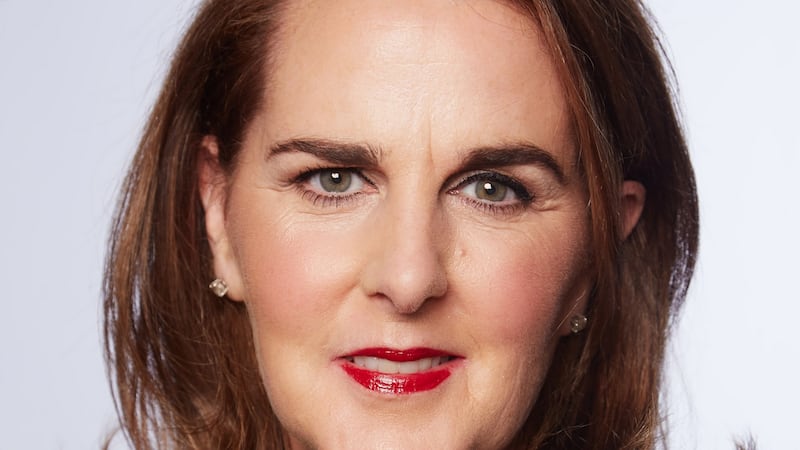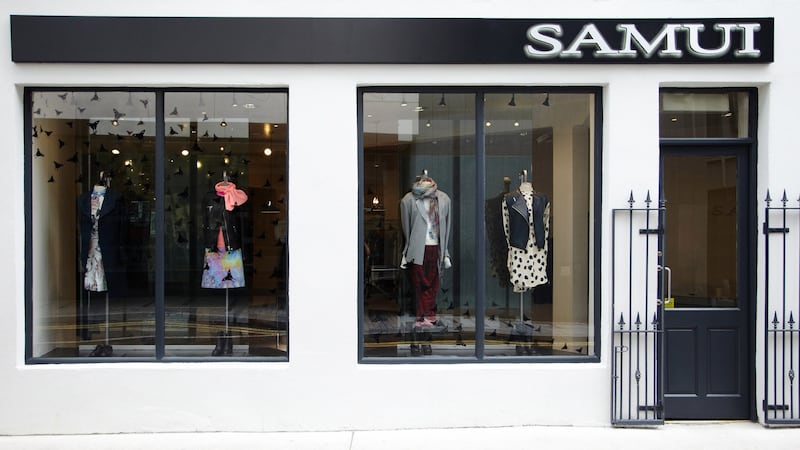Every city has its shopping thoroughfares, the well-established streets immortalised on Monopoly boards. But independent retailers take a road less travelled and help create hubs where the hip hang out – until rent increases force them to move on to an edgier and more affordable part of town.
It is part of the retail cycle but as Clare Grennan, co-founder of the Irish Design Shop which opened its doors first on Dublin’s Bow Lane in 2009, points out, independent retailers give our streets personality. Without them our shopping landscape becomes soulless.
“We see first-hand the importance of shopping local but we feel there’s no support,” she says lamenting that rates are so high. “We pay €8,000 in rates, which is meant to cover street cleaning but it’s pretty abysmal. We’re told it also covers Christmas lights but we get another bill for that. We see it as another tax.”
VAT at 23 per cent is also tough.
“The VAT rate went up from 21 per cent to 23 per cent in 2012 and hasn’t gone down since then,” Grennan says. “The food/hotel trade has been able to flourish over the past few years because their VAT rate was reduced to 9 per cent, but nothing has been done to assist the retail trade. We feel there should be something to help at least businesses that are selling Irish-made goods, as that is helping create an income for several indigenous businesses.”

A jeweller by trade, Grennan opened the shop with business partner Laura Caffrey. Two salaries are required, as well as wages for one staff member who works three days a week and three interns.
The jewellers also lease the two floors above the shop, which they share with other designers. In 2013, they took a five-year lease and moved from Bow Lane to their more visible location on Drury Street. They’re expecting a rent increase that they say they can ill afford.
“We helped create the vibrant personality of our street,” Grennan says. “Yet there are no rent caps or initiatives to keep the area independent.”
The women are somewhat sanguine. “This is what happens. Look at Clerkenwell in London and those shopkeepers priced out of London that moved to Brighton now having to move to Margate because of rising rents.”
Samui, Cork
In Cork, Clodagh Shorten opened the doors of her high-fashion boutique, Samui, in 2000 after 20 years spent working for the now shuttered Monica John, where she honed her selling skills. At the time there were two other fashion and two independent shoe shops that she would have seen as competitors. All are gone as a result of the recession or retirement.

During those difficult times, Shorten says, those who had money had to be careful about spending it. Many went to London or to online sites such as Net-a-Porter. “We became saturated by the middle market.” So she made the bold decision to change her offer and pricing structure, raising her prices to go higher end.
This direction seemed like commercial suicide in the dark days of 2008, but she knew her customers. “They need a professional uniform for the boardroom and a different wardrobe for weekends. They can’t be seen in the same Zara dress as their PA.”
Service is Samui’s unique selling point. Shorten does house calls, offering a design doctor service to good customers where she will rock up to their house with a rail of clothes. She also buys with particular customers in mind – some garments never even hit the shop floor. Instead, they are boxed and sent to customers across the country. She says she only has about a 10 per cent return. Some 70 per cent of her business is repeat customers
Her competition is now online and while building a full online service will cost hundreds of thousands and would be akin to opening a second shop, she is considering partnering with a platform such as FarFetch. “While it takes a bigger margin, it gives you global exposure and won’t interfere with our regular clients.”

She has a 25-year lease on the property on Drawbridge Street, a narrow throughway that runs parallel to the opera house and Merchant’s Quay shopping Centre and has built a shopping hub around her. Here she employs four full-time staff and two part-timers.
“When I moved here there were hardly lights. Now I’m surrounded by other interesting independents: Perry Street restaurant; Paper Dolls, another clothing boutique; and Mercury Goes Retrograde, a vintage shop. By creating a destination it keeps shoppers in the area.”
Rent is 20 per cent of turnover. This figure excludes rates and insurance. “During the Celtic Tiger years rents nearly doubled but only dropped 20 per cent in the recession,” Shorten says. “Rent was 15 per cent of turnover back in 2000.”
Coffeewerk + Press, Galway
Daniel Ulrichs is a second-generation shopkeeper in the City of the Tribes. In 1979 his parents, Barbara and Nanke Ulrichs, opened a toyshop, The Wooden Heart, with items made from wood, in Loughrea, having moved from a still-divided Berlin to Galway’s Quay Street in the mid-1980s.
When the recession hit, Ulrichs, a professional drummer percussionist who was working for the London Centre of Contemporary Music, moved home in 2009 to help out as his father was ill. Even though the family owns the building where The Wooden Heart keeps shop, he says it took two years to find his feet.
Four years ago he set up a small art publishing company, postcards and prints, and 2½ years ago opened Coffeewerk + Press, a cafe housed in three-storey building that is 450 years old. It also sells design products. Featuring limed walls, bare stone features and furniture by Ben Gabriel, designed by Stephen Walton, Coffeewerk + Press marries old medieval Galway with modernity.

Sixty per cent of the shop turnover is its upscale coffee. “The coffee element is our bread and butter,” Ulrichs says. “It allows me to be a lot freer to take chances, to take risks with the buy. The art makes up 15 to 20 per cent of the business, with the design making up 20 to 25 per cent. The coffee shop sells 17,500 per annum.”
He has a 10-year lease for the cafe. Rent is about 15 per cent of turnover and he employs five or six staff depending on the season.
“I view rates as part of my rent and they’re not extortionate,” Ulrichs says. How’s business? “Galway is pretty unique in that everyone understands that we can increase footfall and promote one another. Tourism is much stronger now with the season and the city’s numerous festivals drawing people in from St Patrick’s Day to the end of October.
“I find business creative,” he adds. “I create something, design a shop, a website and sometimes it works, sometimes it doesn’t. It’s like writing a song.”
INDEPENDENT RETAIL UNDER THE MICROSCOPE
At the Irish Design Shop, Clare Grennan illustrates how the money they take is dispersed.
On an item that costs €20, €3.74 goes to Revenue for VAT.
That leaves the shop with €16.26.
From that they pay the supplier. For something that is €20, payment will be about €8.
That leaves the shop with €8.26.
Still to be paid are overheads – rent, wages, utilities, rates, Dublin town (extra rates) etc.











